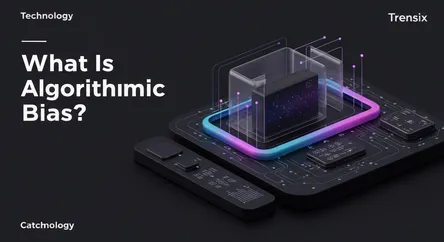Technology
What Is Algorithmic Bias?

Discover what algorithmic bias is, how it creates unfair outcomes in AI systems, and why addressing it is crucial for a fair digital future.
What is it?
Algorithmic bias refers to systematic and repeatable errors in a computer system that create unfair outcomes, such as privileging one group of users over others. This isn't necessarily a malicious act; it often arises unintentionally from faulty assumptions in the machine learning process. The primary cause is biased training data, which reflects existing human prejudices or underrepresents certain populations. If an AI is trained on historical data showing hiring disparities, it may learn to replicate those same biases in its own decision-making, creating a cycle of inequality.
Why is it trending?
As AI systems become more integrated into our daily lives—making decisions in hiring, finance, healthcare, and criminal justice—the consequences of their biases are becoming more apparent and significant. High-profile cases, such as biased facial recognition technologies or discriminatory credit scoring algorithms, have drawn public and regulatory attention. There is a growing demand for transparency, accountability, and fairness in AI, making the study and mitigation of algorithmic bias a critical focus for developers, policymakers, and ethicists.
How does it affect people?
Algorithmic bias has profound, real-world consequences. It can perpetuate and even amplify societal inequalities. For example, a biased hiring algorithm might systematically filter out resumes from female candidates for technical roles. In lending, it could lead to individuals from minority communities being unfairly denied loans or offered higher interest rates. In policing, predictive algorithms could disproportionately target certain neighborhoods, leading to over-policing. Ultimately, it can limit opportunities, reinforce stereotypes, and erode trust in the technologies designed to help us.